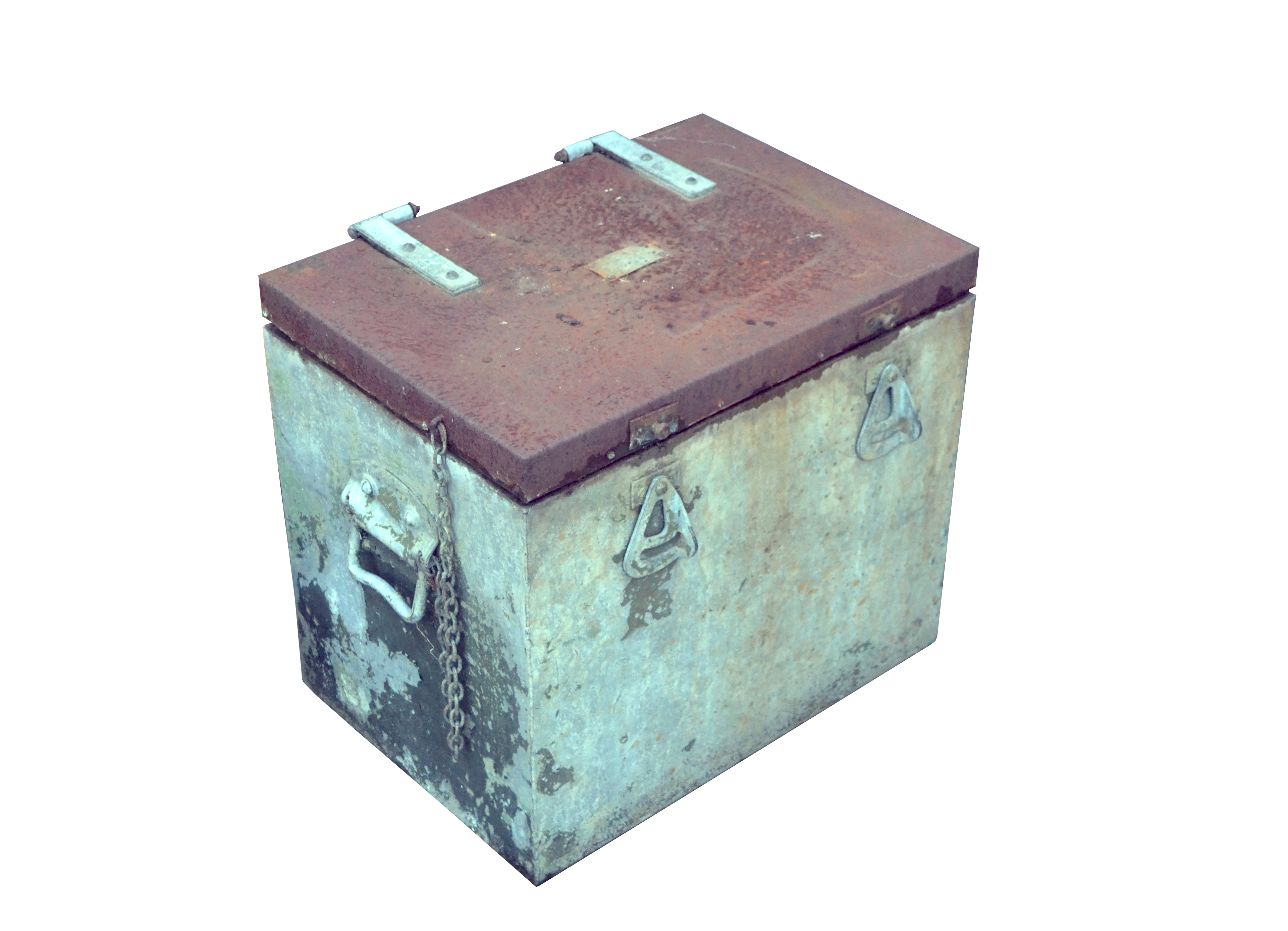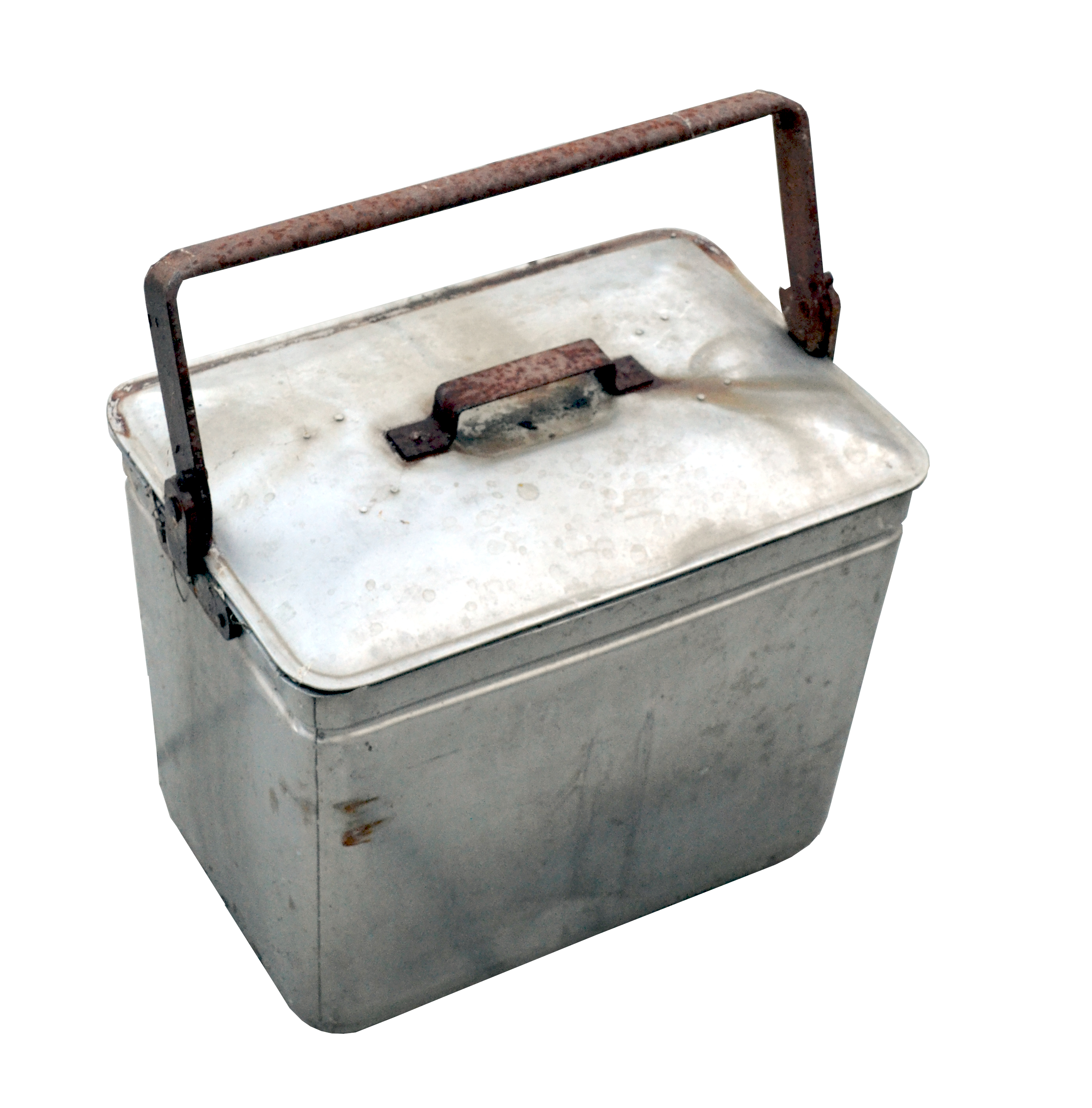On the face of things, the Hay Box was a device to transport hot food from kitchens to troops. Although it appears simple, there is more to it than at first appears.

It got its name from the straw or hay used to form the insulation. While it was used for transporting food, its primary purpose was as a cooker. The food was partly-cooked in the inner box, which was then placed into the straw-lined outer box, where the insulation caused it to continue cooking. The only drawback was that, should the food remain inside the box for longer than an hour, bacteria could form and cause food poisoning. However, bringing the contents to the boil again could eliminate any bacteria.

The outer box (above) is made of tin and despite the material used, is extremely heavy.

The internal container is a dixie-style cooking pot with a handle that allows the lid to be locked to prevent spillage and add to the isulation.

It got its name from the straw or hay used to form the insulation. While it was used for transporting food, its primary purpose was as a cooker. The food was partly-cooked in the inner box, which was then placed into the straw-lined outer box, where the insulation caused it to continue cooking. The only drawback was that, should the food remain inside the box for longer than an hour, bacteria could form and cause food poisoning. However, bringing the contents to the boil again could eliminate any bacteria.

The outer box (above) is made of tin and despite the material used, is extremely heavy.

The internal container is a dixie-style cooking pot with a handle that allows the lid to be locked to prevent spillage and add to the isulation.
Our example, is certainly not a matched pair. They are dated 1939 and 1940 respectively. There is no history to connect them with a particular unit and given we obtained them via a well-known online auction site from within the UK; equally there is nothing to suggest they were used in France by the BEF, but provides a nice illustration of the concept.
